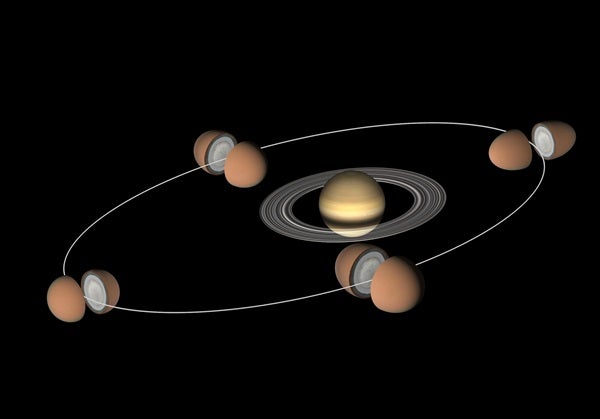This amount of tidal deformation is associated with a malleable, likely liquid ocean layer inside the moon. Current estimates place Titan’s ocean at more than 62 miles (100 km) thick. If Titan were solid all the way through, the expected deformation of the surface throughout its orbit would total only about 3 feet (1 m).
However, like most of the solar system’s larger satellites, Titan is tidally locked to Saturn. A tidally locked satellite simply rotates once per every orbit around its parent body, always showing the same face to the planet. Such satellites can still experience tides. Because Titan’s orbit is elliptical, the gravitational influence of Saturn from the near to far side of the moon varies throughout its orbit, which causes the deformations recorded by Cassini.
Alison Klesman
Associate Editor










